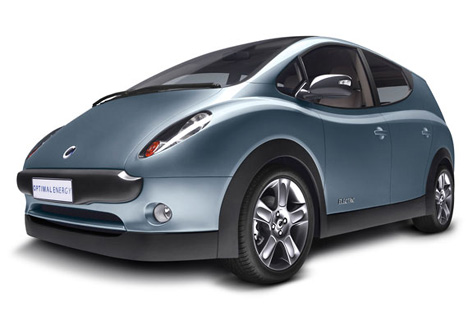
Hats off to South Africa’s Optimal Energy for developing an electric car with a range that can cope with the distances between towns here. Let’s face it, the 190km that the Tata Indica electric car can stretch to wouldn’t get you from Cape Town to Hermanus for a whale watching weekend. With the Joule on the other hand, you could make it all the way to Oudtshoorn for the KKNK. Of course, you could make the same distance with the Tesla Roadster, but that would cost you a whole lot more, and need to be imported (import duty, massive carbon footprint, etc.).
So the Joule is pretty cool, it’s looks aren’t bad at all, and it is going to manufactured as a six-seater, so it’s perfect for all the rugby/cricket/hockey moms to be driving around town. Best of all, it will take your carbon footprint right down and reduce the pollution that you’re creating for all those little kiddies (and us grown-ups) to breathe in while they’re going about their daily school run. But that doesn’t solve the challenge of how you’re going to get from Cape Town to Splashy Fen without overnighting a couple of times to charge up your car.
There is a solution in the pipeline thanks to EV superhero Shai Agassi and his Silicon Valley start-up Better Place. It’s a prototype at the moment, and in Japan, but perhaps one day we’ll see our cities and towns dotted with battery swap stations like this one.
I think that we’re probably unlikely to see battery change stations in small Karoo towns anytime soon, but in the future, who knows.
Depending on affordability, I’d be interested in acquiring a Joule as our family car when they become available in 2012. In the meantime, I’ll be considering installing solar panels on the garage roof to keep it charged without relying on dirty electricity.
[ad#468×60]